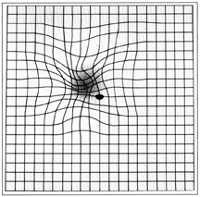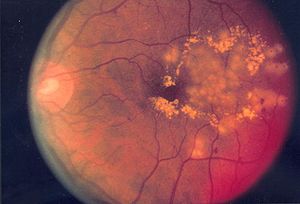 Image via Wikipedia
Image via Wikipedia
In a survey of more than 1,800 women, those whose diets were poor in fruits, vegetables and whole grains had a high risk of developing cataracts - deposits of altered proteins in the lens of the eye that can impair vision, according to Julie Mares, an ophthalmology professor at UW and lead author of the study
Separately, a preliminary study in the same journal found a correlation between high levels of sun exposure combined with the taking of certain medicines, including antibiotics and anti-depressants, with cataract formation.
Another study in the same journal shows a link between smoking and the development of one of the leading causes of blindness, age-related macular degeneration. Researchers aren't sure why smoking is linked with macular degeneration. Hypotheses include the suppression of antioxidants by tobacco smoke and impairment of blood circulation in the eye, said the report's lead author, Ronald Klein, an ophthalmology and visual sciences professor.
The findings on macular degeneration involved 2,800 people and come from the Beaver Dam Offspring Study. It is a second massive study of vision and eye diseases that the Kleins have conducted. The first, known as the Beaver Dam Eye Study, or BDES, began in 1987 and is ongoing. The offspring research involves the sons and daughters of participants in the first eye study.
 11:19 AM
11:19 AM
 Keshav Bhat
Keshav Bhat























